The Next Generation of Beauty Filters Augment Content Value — Not Faces
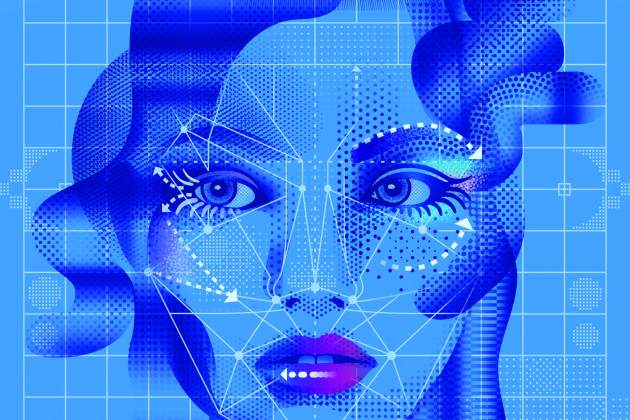
Perhaps to the initial dismay of some collaborators, Grace Choi isn’t an idea repeater.
“I never like to do the same thing twice,” said the augmented reality filter creator, who knows the key to disrupting the tedium of a typical TikTok scroll through her craft hangs in the balance of functionality and novelty.
More from WWD
AI Is Rewriting the Beauty Ingredient and Formula Creation Playbook
Inside David Chung's Vertically Integrated Beauty Wonderland
Though Choi has been innovating in the beauty industry for more than a decade — she debuted the first 3D makeup printer in 2014 through her company, Mink — it wasn’t until TikTok launched its AR Effect House platform in beta mode in 2021 that she began seriously dabbling in social media filter creation.
“I thought there just wasn’t quite a platform that was right for it,” said Choi, who previously trialed Meta’s analogous Spark AR program but decided it “wasn’t as conversational as TikTok, which was so creative and interactive — it was a great environment to just experiment.”
Rather than adding to the spate of beauty filters which distort or exaggerate a user’s facial features, Choi sought to introduce filters with function — “utility filters,” she has since coined them — either in terms of their ability to resolve a user quandary, guide makeup application, and so forth.
Her first filter was prompted by her own personal dilemma: mastering the perfect brows.
Using the mathematical concept of the golden ratio — which conveys the idea of perfect or symmetrical composition — Choi created a filter that maps out how a user can best fill in their eyebrows to suit their facial proportions. One month after its debut, people began catching on.
“Someone in Mexico used it, and then the filter started swirling around from there,” said Choi, whose inaugural filter has garnered more than 3 billion views across 281,000-plus posts since its debut in 2022. “After that [launch], I felt validated — like, ‘OK, people want this.’”
It wasn’t long before brands wanted in on the momentum, too. Choi soon introduced a blush placement filter in collaboration with Patrick Starr’s One/Size to promote the launch of a new blush trio; a bronzer placement filter with Nars Cosmetics, and a steady slew of others with Dior Beauty, Fenty Beauty, Benefit Cosmetics and more — each filter serving as a tool for a distinctive need.
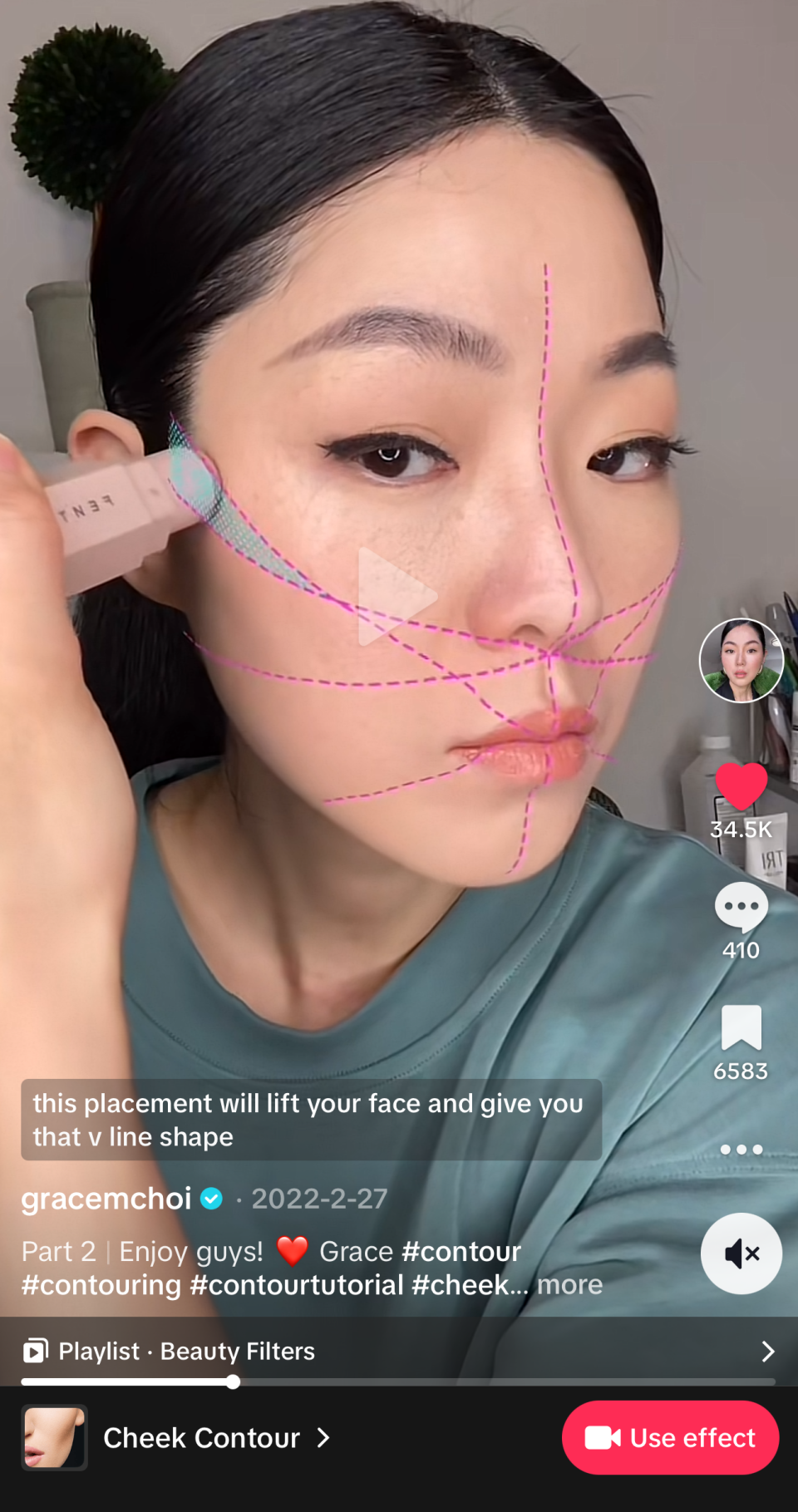
“I’ve always felt that beauty moments and experiences — particularly things that you would do in-store like shade or color matching, or even makeup tutorials — could be much more personalized and immersive using augmented reality,” said Choi, who most recently collaborated with Kosas on a “Find Your Undertone” filter to accompany the brand’s expansion of its Revealer Concealer shade range.
Introduced in 2020, Revealer Concealer was among the earliest class of TikTok-viral beauty products. In response to feedback that the product’s shade range didn’t wholly cater to consumers with cool or neutral undertones, though, Kosas unveiled 11 additional shades at the top of 2024, bringing the total assortment to 38 shades.
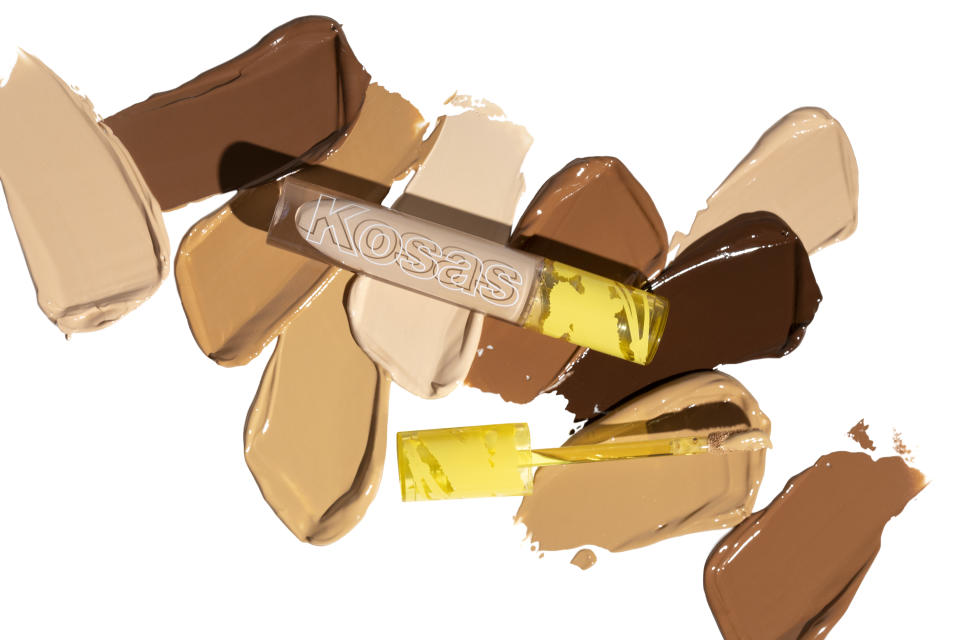
“We were thinking about how we can launch a product with a splash and move the conversation beyond, ‘have you seen this viral product trending on TikTok?” said Kosas chief marketing officer Adeline Leong.
The brand tapped six large-scale influencers to get the filter launch off the ground, and organic adoption was swift; within two weeks, the filter had accumulated 160 million views across roughly 48,000 TikTok videos. More than 40 of these videos exceeded 1 million views, some of which came from creators with a mere few hundred followers.
“We saw the filter as an education tool,” Leong said. “TikTok can be such a world of ‘just get the influencer to talk about your product being the best one,’ and that’s really oversaturated right now; we want [our consumer] to get into a Sephora, but we also want to start the conversation online where it’s already happening.”
For Choi, who keeps a running list of potential filter ideas based on what she sees the beauty community discussing online, facilitating conversation is a key aim of the creative process.
“TikTok not only provides the technology to create these filters, but also the social aspect where you can see someone that looks like you using the filter, and it gives you this kind of social confirmation of ‘she’s using this filter and she looks like me — maybe I’m actually a cool undertone.’ It creates this community shopping environment,” Choi said.
Ulta Beauty Collective member and filter creator Zahava Ben-Haim (@makeup2themaxx) also seeks to enrich online discourse through her signature randomizer filters, the first of which was a Rare Beauty blush shade randomizer that she debuted in June 2023.
“Creators were finding it very hard to interact with PR [mailers]. It can get difficult when you’re receiving such a high volume of product, so I thought, ‘what’s a way for us to interact with the mailer and keep it going?’ because usually you get one video where it’s like, ‘OK, let me try this blush and I’m done,’” said Ben-Haim, who spent years as a cosmetic chemist and beauty marketer before turning to content creation during the COVID-19 pandemic.
The filter eventually landed on the Rare Beauty team’s own For You Page, prompting celebrity founder Selena Gomez to try the filter out herself in a video that garnered more than 1 million likes.
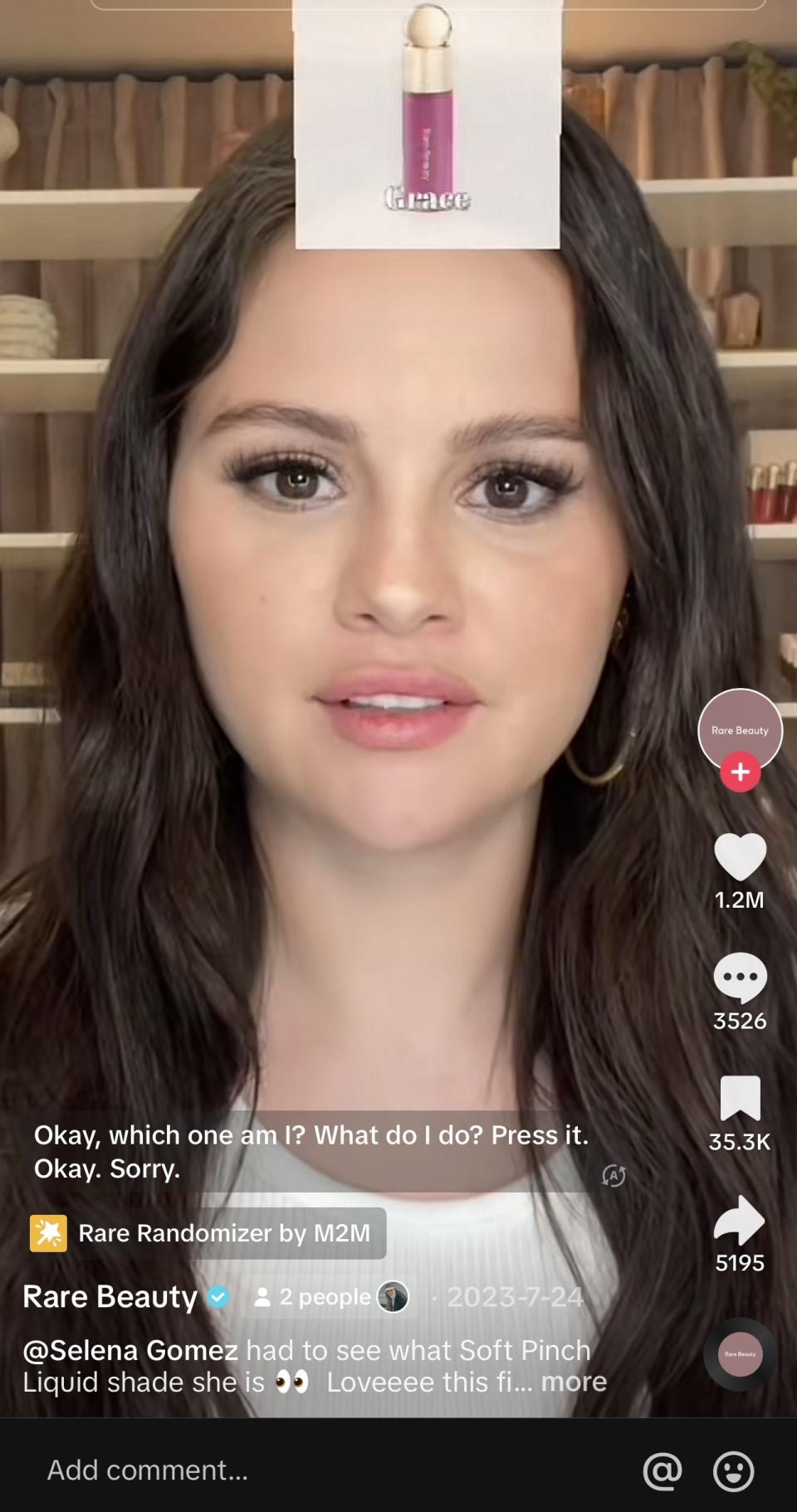
“When we saw the blush randomizer we were like, ‘this is brilliant — why didn’t we think of this?’” said Ashley Murphy, vice president of consumer marketing at Rare Beauty, who then tapped Ben-Haim to create a bracket filter that allowed users to determine their favorite Rare Beauty product, as part of the brand’s third anniversary celebration that summer.
“If you go back and watch some of those [bracket] videos, some of them are like, ‘oh, this is so hard,’ or people are sitting there really deliberating for multiple seconds and are engaged with the brand in this, ‘Do I pick the lip oil? Do I pick the blush?’ kind of desert-island situation,” Murphy said.
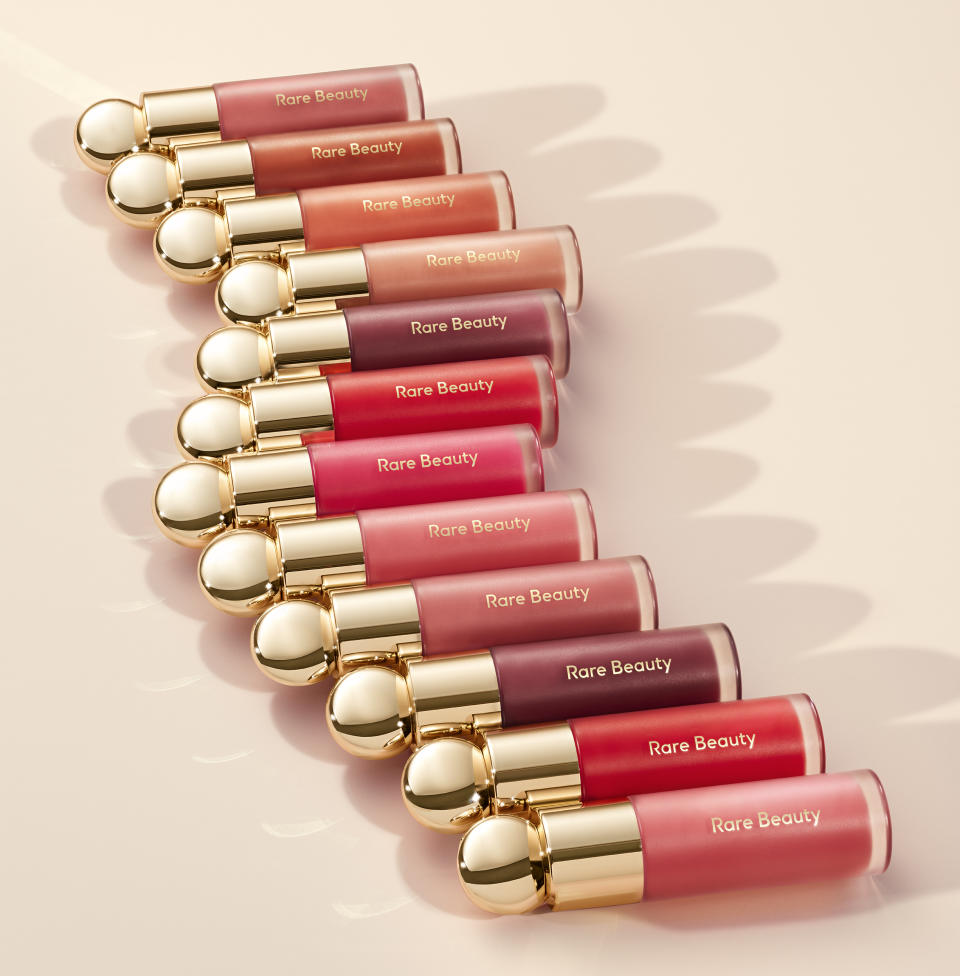
Among Ben-Haim’s other popular creations are a “Drugstore beauty” randomizer, which chooses the brand a person must use for each makeup step and spawned a subsequent “Luxury makeup” randomizer; a product ranking filter she used to separately rank Ariana Grande’s fragrance collection and Hailey Bieber’s Rhode assortment, and an “Ulta Beauty picks my next buy” filter.
“You can tell when someone discovers my page, because they’ll use all the filters in one week,” said Ben-Haim, who counts 106,000 followers on TikTok and whose 12 filters have accumulated more than 222 million collective views.
A suggestion from influencer Mikayla Nogueira prompted Ben-Haim to introduce a “Clean beauty” regimen randomizer, and she most recently partnered with MAC Cosmetics on a lip shade randomizer, integrated via QR code into the brand’s Macximal Silky Matte Lipstick mailer celebrating the 40th anniversary of its founding this year.
“I do think those big, ‘wow’ beauty mailers are still relevant — it’s obvious brands want to get our attention, I just want to make sure people aren’t missing the point of interacting and playing with the product, versus a brand throwing them a box and hoping for a review,” Ben-Haim said.
In other cases, the benefit of functional filters lies in their ability to amplify a brand without entailing the kind of overt advertising that TikTok users are, in any case, weary of.
For example, neither Choi’s Kosas undertone filter or her “Match Stix Snatch” Fenty Beauty contour filter feature any mention of their respective affiliated brand — only subtle nods to their signature color schemes.
“You want to have as many people as possible to use the filter, so the less branded it is, the better,” said Choi, who does make sure to verbally name brand collaborators in any filter kickoff video. “TikTok is an echo chamber, so if I say ‘this filter by Fenty Beauty,’ the next person is going to do the same — you don’t need those hyper-branded elements.”
Though the majority of Choi’s beauty filters to date have been maps — or filters which guide product placement in some way — the undertone-finder marks the start of the next leg of her creation journey, during which she anticipates maps won’t be the only or the best way to engage consumers through utility filters.
“This is tech and this is beauty — two spaces that constantly evolve and that consumers constantly get fatigued by,” she said. “Maybe it was maps last year, or undertones this year — they’re totally different disciplines, but the common thread is that you’re solving a problem for a customer in beauty.”
Best of WWD

